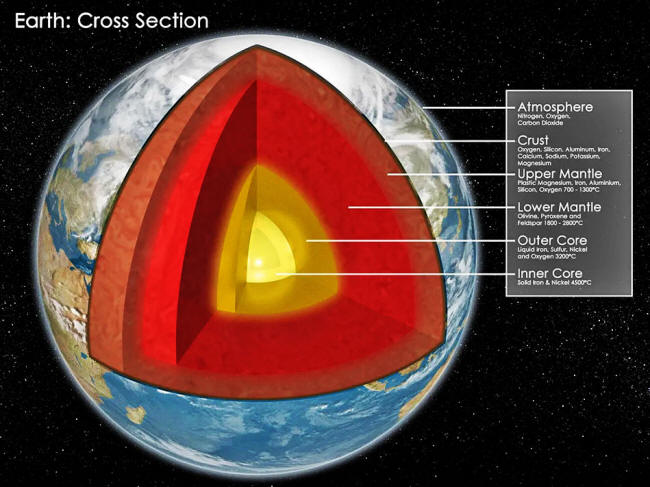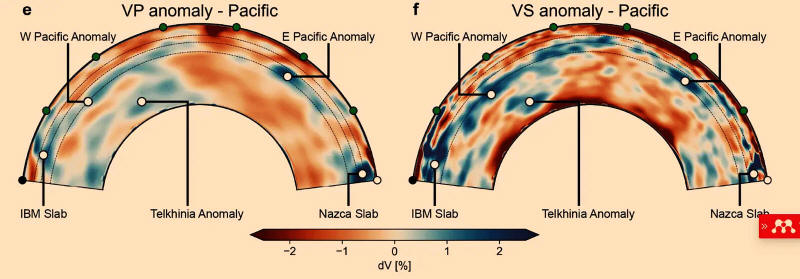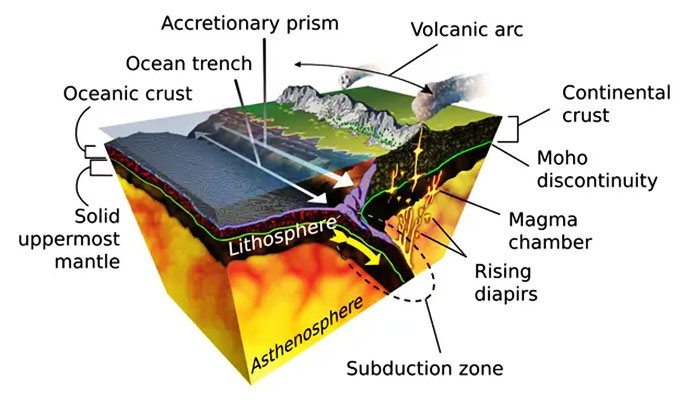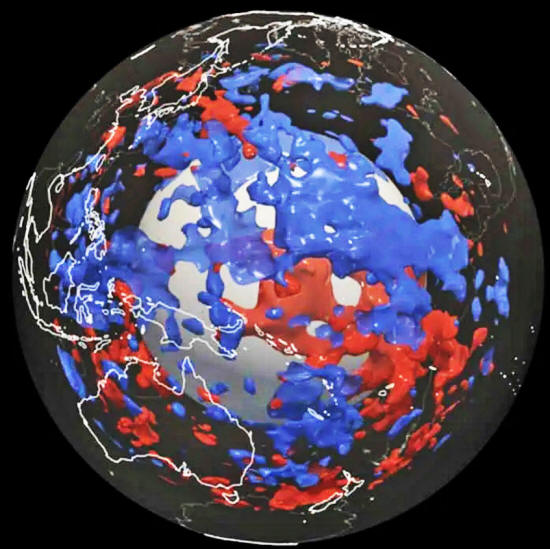|
by Mihai Andrei a hot, dense layer of rock; it's a dynamic and diverse engine driving our planet's geology.
But beneath our feet lies a world far more complex and dynamic than this simplified view suggests.
Recent research, using cutting-edge Full-Waveform
Inversion (FWI) technology, has revealed that the Earth's mantle - a
massive layer stretching nearly 2,900 kilometers deep - is a chaotic
and varied mix of structures, challenging long-standing assumptions
about its composition and behavior. anomalies in the mantle. Image credits: Nature.
The Earth's mantle, a massive layer of rock beneath the crust, is the "engine" of plate tectonics.
But the problem is we can't really see the mantle or dig to it.
Instead, much of what we know about the mantle (and the deeper areas) comes from seismology.
Seismology studies the Earth's interior by analyzing how seismic waves, generated by earthquakes or artificial sources, travel through its layers.
When these waves encounter changes in material properties - such as differences in temperature, density, or composition - they change speed, direction, or type.
By measuring these changes at seismic stations on the surface, scientists can map anomalies in the mantle, like faster wave speeds indicating colder, denser materials, or slower speeds suggesting hotter or less dense areas.
Seismic tomography, an important technique, uses these measurements to create 3D models of the mantle. This reveals its hidden structures and helps us to understand its dynamic processes. But seismic tomography has its own limitations.
A recent study employing Full-Waveform Inversion (FWI) has redefined what we know about the mantle, revealing intricate structures previously undetectable by conventional methods.
A new world beneath the crust
Plate tectonics is the theory that underlies modern geology.
It basically states that Earth's outer shell, or lithosphere, is divided into large, rigid plates that float and move on the semi-fluid layer beneath, called the asthenosphere.
These plates interact at their boundaries in three main ways:
When they converge and cause subduction, the heavier plate sinks under the less dense one.
Depiction of subduction. Image via Wiki Commons.
Traditionally, positive seismic wave speed anomalies in the mantle were attributed to "cold slabs" - remnants of subducted tectonic plates.
Essentially, seismic wave speed anomalies in the mantle have long been considered the "footprints" of such plates. But the new study found that many of these anomalies do not spatially correlate with known subduction zones.
In fact, it found that just 60-70% of subduction zones align with positive anomalies.
It's unlikely that we've missed any big subduction zones, so instead, this suggests that the wave speed anomalies could have a different cause.
The researchers suggest that these anomalies could also be caused by compositional differences, not just temperature variations. For example, anomalies might stem from the presence of chemically distinct materials like basalt-rich rocks or delaminated lithosphere.
For instance, basalt-rich regions, remnants of ancient oceanic crust, exhibit higher wave speeds due to the formation of dense minerals like garnet and bridgmanite at high pressures.
Full wave inversion
speed anomalies of Seismic waves. Image credits: ETH Zurich.
This approach significantly enhances resolution,
particularly in regions with limited seismic stations. Unlike
traditional models, FWI can capture subtle variations and
smaller-scale structures.
With recent advancements, the results speak for themselves: anomalies that were either overlooked or misinterpreted by earlier models are now clearly visible.
The REVEAL model, a product of FWI, stands as the most detailed representation of Earth's mantle to date.
The implications are substantial. Past models of tectonic history often relied on the correlation between mantle anomalies and subduction zones.
With these processes affecting everything from volcanoes and earthquakes to mountain formation, figuring out what exactly is causing these anomalies would substantially improve our understanding of the Earth.
But for now, we still don't know it.
The researchers suspect it's not just one thing, but could be several different materials and processes causing these anomalies.
Challenging old
assumptions Furthermore, the results should be confirmed by other studies before we start rewriting the geology books.
Integrating FWI with other geophysical and geochemical tools could provide a more comprehensive understanding of mantle dynamics.
For example, combining seismic data with mineral physics experiments could help decode the exact composition of high-wave-speed anomalies, distinguishing between thermal and chemical contributions.
The study (Full-waveform Inversion reveals diverse Origins of Lower Mantle positive wave speed anomalies) was published in Nature.
|





